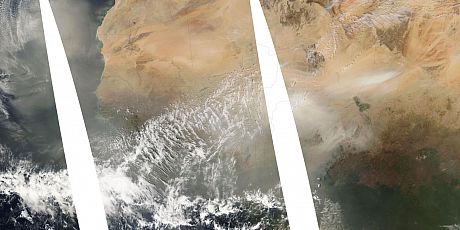How does dust from the worlds deserts help support tropical oceanic and terrestrial ecosystems?
The Earth’s atmosphere is rich with tiny particles (aerosols) from many natural sources including volcanoes, sea salt, vegetation and the world’s deserts. These aerosols can have a very important impact on the climate system but remain one of the largest uncertainties in climate projections due to their complex nature and effects. Our research focuses on dust aerosols from the Sahara and has highlighted a unique and unsung natural wonder in the middle of the Sahara, the Bodele depression (in Northern Chad). This ancient dried up lake bed is the world’s greatest dust source. Our research has discovered how the coincidence of the strongest winds in the Sahara and the fertile sediments means that vast quantities of dust are emitted and then transported over Africa and Atlantic and all the way to rain forests of South America. potentially providing essential nutrients to these ecosystems. The Bodele phenomenon encapsulates beautifully the complex and interconnected processes of the Earth System.
 A typical dust storm from the Bodele Depression, Northern Chad, evident from the white plume oif dust to the north of lake Chad. Note the pale milky plume of dust from the previous day now lying over Nigeria
A typical dust storm from the Bodele Depression, Northern Chad, evident from the white plume oif dust to the north of lake Chad. Note the pale milky plume of dust from the previous day now lying over Nigeria
Find out more...
- Atmospheric aerosols
- The Bodele depression, Northern Chad: the world’s dustiest place
- Martin Todd
- Read paper on Bodele Depression
Banner image: climateadaptation.tumblr.com. Bodele Depression image: NASA


